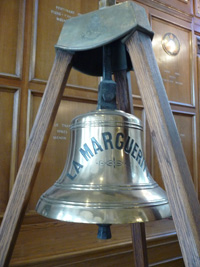City of London Rifles Regiment History
A short history of the City of London Rifles’ Regiment
Below are listed the notable dates that form the history of the Regiment:
- 1859 Formation of a volunteer movement, the Battalion was later to become the City of London Rifles. Upon formation it bore the name 24th Battalion Surrey Regiment. With many recruits coming from the newspaper and print industry.
- 1863 It was renamed the 48th Battalion Middlesex Regiment. The story goes, “that during the change-over the new unit was to be recruited as a temperance Battalion”!!! It makes one wonder where the recruits came from.
- 1872 The 2nd Battalion City of London Volunteer Regiment was amalgamated.
- 1895 The first Honorary Colonel was appointed.
- 1896 Amongst other duties the Battalion took part in Queen Victoria’s Jubilee celebrations.
- 1900 In the South African War the Regiment formed part of the City Imperial Volunteers and set sail in January of that year to South Africa and was stationed there until 1902.
- Received Battle Honours – ‘South Africa, 1900-1902‘
- 1908 At the time of the creation of the Territorial Force ( later to be the T. A.), the Regiment was reorganised again and known as the 6th Battalion London Regiment, but it was still the City of London Rifles’ as before. The Battalion nickname was ‘The Cast Iron Sixth’, which is believed to come from the black buttons on their uniform as opposed to silver or brass
- 1914 The Battalion was in the 2nd London Brigade, 1st London Division, and at the end of August a duplicate or second line Battalion was formed, and the two Battalions were named 1/6th and 2/6th. In November 1914 the 1/6th was transferred to 4th London Brigade, 2nd London Division, later 140th Brigade, 47th Division with which it remained until January 1918
 1915 On the 17th March the 1/6th Battalion sailed to Le Havre on the SS. Marguerite (The bell of which stands in the church of the Holy Sepulchre, Holborn, near the War Memorial ).
1915 On the 17th March the 1/6th Battalion sailed to Le Havre on the SS. Marguerite (The bell of which stands in the church of the Holy Sepulchre, Holborn, near the War Memorial ).- Received Battle Honours – ‘Festubert, 1915, Loos, Flers- Courcelette, Le Transloy, Ypres, Passchendale, 1917, Epehy, Pursuit to Mons, France and Flanders 1915 – 1918‘.
- 1916 The 6th Battalion based at Fovant camp, Wiltshire. Whilst there the members carved their Units badge on the chalk hillside. To this day it and other military badges are preserved there under the care of the Fovant Badges Society. Read more about the World War I collection held within The Pembroke Arms Fovant. The collection was previously displayed in the The Pembroke Arms pub until 2012 when the pub was closed down and now the collection is in safe storage and held by the Fovant Badge Society. Read more here.
- 1919 Demobilisation came February/March. Later that year it was reconstituted as the Territorial Force – 6th Battalion London Regiment.
- 1936 The regiment was converted into a searchlight Battalion of the Royal Engineers.
- 1937 The Battalion moved Headquarters in Farringdon Road to Morden (Stonecot Hill). Plus another change of title to the 31st (CLR) AA Bn. Royal Engineers.
- 1938 History of the Regiment 1st Edition published entitled The “Cast Iron” Sixth, A History of the 6th Battalion-London Regiment ( The City of London Rifles )by Capt. E.G. Godfrey, M.C.
- 1940 Became the 31st Searchlight Regiment Royal Artillery
- 1941 Became Ack Ack 123 Light AA Regiment R.A. (City of London Rifles). Held until the end of the Second World War.
- Received Battle Honours – ‘ Europe ‘
- 1947 Territorial Army reformed. The Regiment then became 566 HAA Regiment R.A. (CLR) and then 566 Light Regiment (CLR). Other amalgamations followed with the 4th Queens (Surrey Yeomanry) until disbandment in 1961.
- 1961 Regiment disbandment.
© Copyright2024 The City of London Rifles Lodge No. 5606
design by WPExplorer


 The City of London Rifles Lodge No. 5606 has been proudly awarded a 'Foundation Lodge' status of the Metropolitan Masonic Charity 2010 -2014.
The City of London Rifles Lodge No. 5606 has been proudly awarded a 'Foundation Lodge' status of the Metropolitan Masonic Charity 2010 -2014. Len Shackleton
Len Shackleton